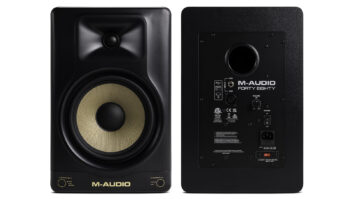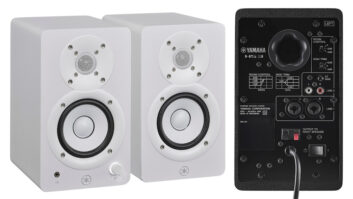The METAlliance—Al Schmitt, Chuck Ainlay, Ed Cherney, Elliot Scheiner, Frank Filipetti and George Massenburg—has the dual goals of mentoring through “In Session” events [the next one is in February at Capitol Studios], and conveying to audio professionals and semi-professionals our choices for the highest quality hardware and software by shining a light on products worthy of consideration through a certification process and product reviews in this column. Its mission is to promote the highest quality in the art and science of recording music.
With four Grammys, two CMAs and 10 ACM awards, producer/engineer Chuck Ainlay has recorded and/or mixed well over 300 albums, including work with legendary and current Country artists such as George Strait, Taylor Swift, Miranda Lambert, Lee Ann Womack, Steve Earle, Lyle Lovett, Emmylou Harris and The Dixie Chicks. Chuck has placed his distinctive production and engineering stamp on projects with mainstream pop artists such as Dire Straits and the near entirety of Mark Knopfler’s solo career, as well as Peter Frampton, Lionel Richie, James Taylor, Jewel, Bob Seger, Pentatonix and Sheryl Crow. His work in immersive audio has resulted in groundbreaking projects such as the 25th anniversary remix of Peter Frampton’s Frampton Comes Alive and the Grammy award-winning 20th anniversary remix of the Dire Straits album, Brothers in Arms.
This being the second in our monthly series of reviews for Pro Sound News (last month, Frank Filipetti reviewed Audio-Technica 5000 series microphones), I thought it only fitting that the second be a speaker review. The microphone must capture a sound and turn it into a corresponding electrical impulse that we record and mess with, while the speaker in turn must take those amplified electrical impulses and create a faithful reproduction of the recorded sound. In this review, I’ll talk about the innovative new technology of JBL’s 7 Series studio monitors and how it creates never-heard-before performance from a small speaker. The 7 Series range consists of the previously released LSR-708i and 705i passive speakers, as well as the newly released LSR-708p and 705p self-powered speakers. My experience is mostly with the 708p, but my characterization is true of the entire line.
It was at the 2015 AES convention in Los Angeles that I first heard the 708i. JBL had set up a private listening environment at the Grammy Museum’s theatre near the convention center, where it was demoing its flagship studio monitors, the M2, as well as introducing a new smaller speaker based on the same design. We first heard some beautiful high res playbacks through the M2s, and then we were treated to the same music played through a pair of much smaller speakers. The SPL and bottom end that was generated was unbelievable, so much so that I had to ask if they were using a subwoofer (they weren’t), and then subsequently ask them to unplug the M2 mains, just to be certain that all I was hearing was the small speakers. It’s just that I’d never heard anything like that out of such a small speaker.
The initial offering of the 7 Series was a passive speaker intended for multichannel, post production use, designed using an external amp and digital crossovers to make it cost effective. For my purposes, a self-powered speaker was more appropriate, but I had to wait patiently for it to be released.
I had the same experience when I first unpacked the new 708p powered speakers and listened in my studio’s control room. I was tracking an acoustic band with an upright bass. I had been struggling with the inconsistencies of the bass notes and was thinking that I needed to change mic position. Once I put up the JBLs, all of that evened out, and yet the presentation was what I was used to from my tried and true near field speakers.
I’ve now had the 708s in near constant use in my home studio. Although the speaker is equipped with DSP for the crossover, there’s also 12 bands of room EQ plus eight additional bands of user EQ that I’ve never felt the need to mess with. I just instantly felt comfortable with these speakers right out of the box and have had nothing but praise from my clients for the mixes I’ve done using them. I tried moving them around a bit, initially having them on speaker stands in a nearfield configuration, but settled on a more midfield spacing.

The METAlliance is presenting its 2019 immersive recording workshop February 2 & 3 at Capitol Studios in Hollywood. Special artists TBA. George Massenburg commented, “Another opportunity to share the art and craft we love with people from all walks of life and levels of experience. It’s truly a special event, even for us.” Every attendee will participate in four sessions, each designed to provide different experiences in the recording process and led by the founding members. Amenities include lunch and giveaways. Space is very limited. MORE INFORMATION >>
The one thing that completely blew me away when I first started using the 708s was the lack of distortion in the top end. I’ve really never heard anything like it from a traditional speaker that utilizes a dome tweeter.
I’m the kind of guy who’s always searching for the speaker that’s going to make my mixes better. My philosophy has always been that if you can’t hear it properly, you can’t mix it properly. Besides the lack of distortion, imaging and depth of field are phenomenal—there’s a dead solid phantom center when you are seated at the mix position, but you can literally sit off to one side and still hear the complete stereo mix without any coloration.

The other thing that I really like is the AES input. It will accept up to 192 kHz and allows me to feed the speakers directly from the AES out of my UA Apollo 16, which I use at my home studio for A-D and D-A conversion. This allows me to bypass the additional conversion getting into the speaker. That being said, in an analog environment, the speaker does the required conversion to digital at 96 kHz before the digital crossover and EQ. That is how JBL is able to create such an extended frequency response and seamless crossover transition.
If you like to listen loud, like I do from time to time, these speakers can fill the room. Dual power amps in each speaker of 250 watts for the HF and 250 watts for the LF; an over spec’d, dual voice coil woofer; and the HF compression driver make that all possible.
Yikes, did I say compression driver? I know what you are thinking—as was I. Compression drivers are harsh and beamy? Not so with the new 7 series. Basically, JBL miniaturized the wave guide and driver technology used in its flagship studio monitor, the M2, to create such outstanding performance.
There’s so much new technology involved that it’s way beyond the purpose of this review to try explain it all, but suffice it to say, it’s very impressive. All these components are beautifully installed in a low resonant cabinet with built-in handles and mounting positions on the top, bottom and rear for easy, permanent installation.
METAlliance • www.metalliance.com
JBL Professional • www.jblpro.com/www/home

The METAlliance—Al Schmitt, Chuck Ainlay, Ed Cherney, Elliot Scheiner, Frank Filipetti and George Massenburg, along with the late Phil Ramone—with the dual purpose of mentoring through “In Session” educational events and to convey to the audio professional and semi-professional the group’s choices for the highest quality hardware and software, by shining a light on products worthy of consideration through a certification process and product reviews in this column. The METAlliance Mission: to promote the highest quality in the art and science of recording music.







